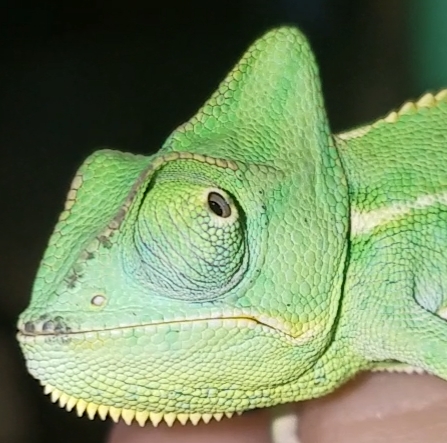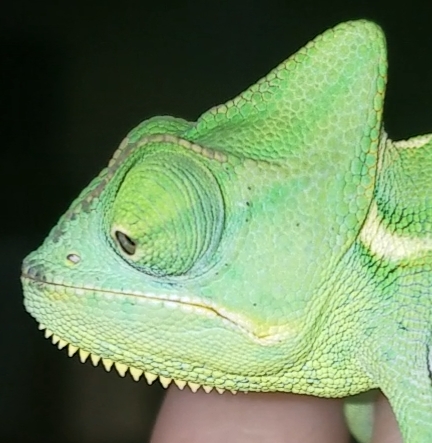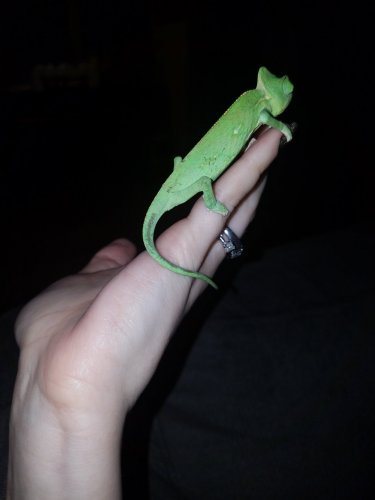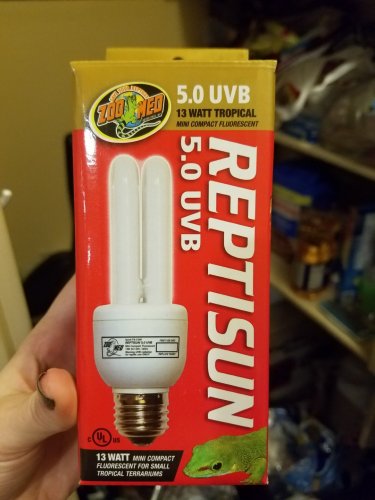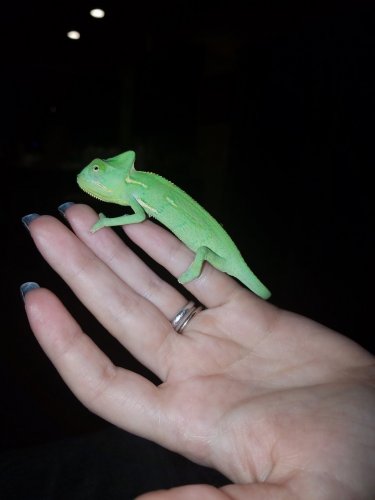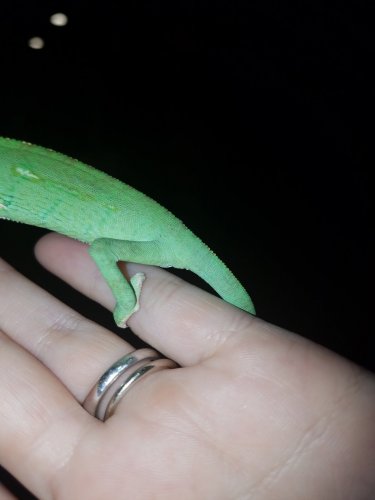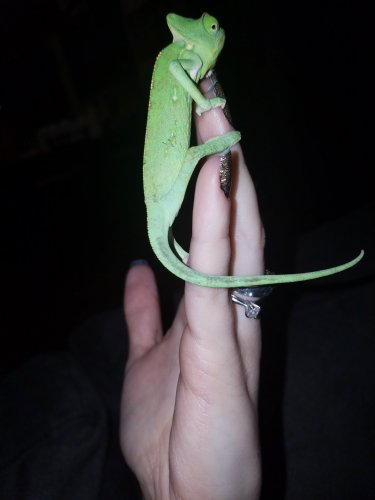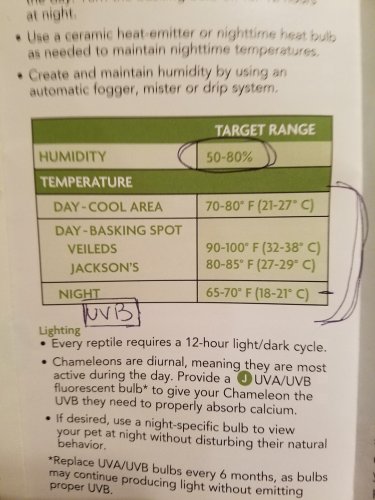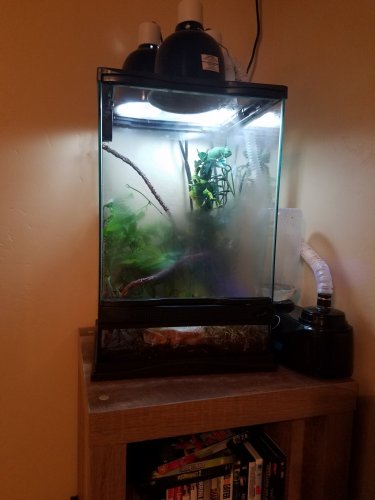BabyCham96
Member
- Your Chameleon - Veiled, unknown sex, and unknown age. Had it for about a month
- Handling - once or twice a week
- Feeding - I feed it small crickets and super worms. About 5 crickets in the morning and a super worm in the afternoon. I just use a regular cricket gel food.
- Supplements - I dust the crickets with Zoo med's reptivite. I dust every week.
- Watering - I have a fogger system that I use to keep the humidity where it needs to be. I mist whenever the vivarium looks dry. I haven't seen him drinking yet
- Fecal Description - The poop has a long brown part and a white tip and it's pretty solid. It hasn't been tested for parasites.
- History - I bought my chameleon from petsmart and they didn't tell me what the age or sex of my chameleon is.
Cage Info:
- Cage Type - I have a 1'X 1'X 3' glass and screen combo vivarium.
- Lighting - I have a mini combo deep dome dual lamp fixture that holds the daytime bulb and uvb bulb. I have another tropical lighting combo lamp that holds the nighttime bulb. I keep the uvb bulb on all the time and I turn the daytime bulb off and switch it to the nighttime bulb every 14 hours. The uvb bulb is 13 watts, the daytime bulb is 60 watts, and the nighttime bulb is 50 watts.
- Temperature - The basking temp is usually around 95 and the low temp is usually 80.Lowest overnight temp is 65 and the highest overnight temp is 80. I have a digital thermometer in the basking spot and thermometer in the bottom of the vivarium.
- Humidity - I keep the humidity between 50% and 60%. I maintain these levels with a fogging system that is always on and I mist when there's no condensation. I have a hydrometer at the top of the vivarium.
- Plants - I don't use live plants yet.
- Placement - The vivarium Is located in the corner of my living room. It's not near any fans, vents, or high traffic areas. The vivarium sits 5 and a half feet high from my floor.
- Location - I live in a dry area in northern Utah.
Current Problem - My chameleon has reoccurring black spots that look like bruises all over it's body and it hasn't been eating much. I think the crickets and super worms are biting it cause now my chameleon won't go near them.

